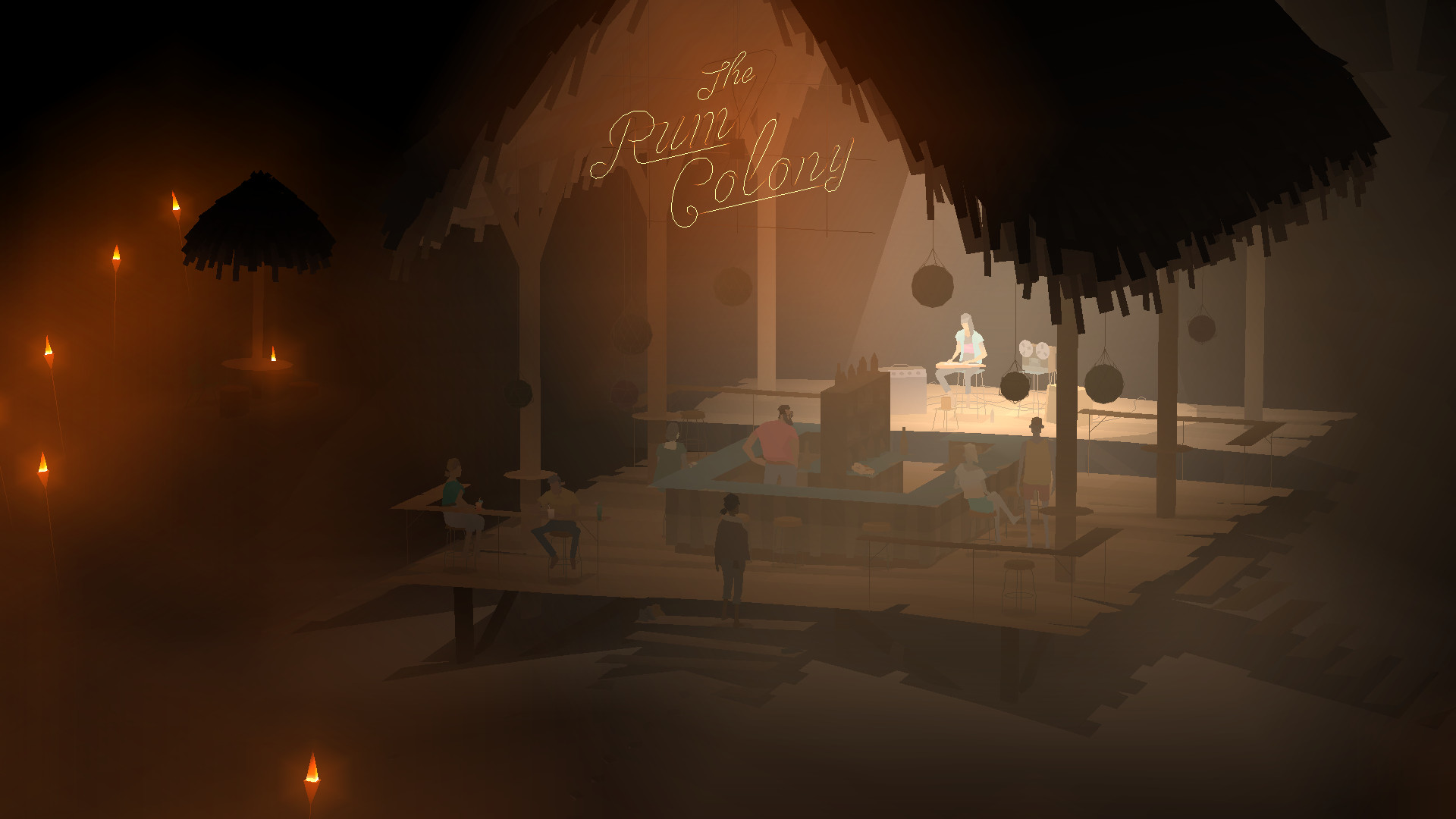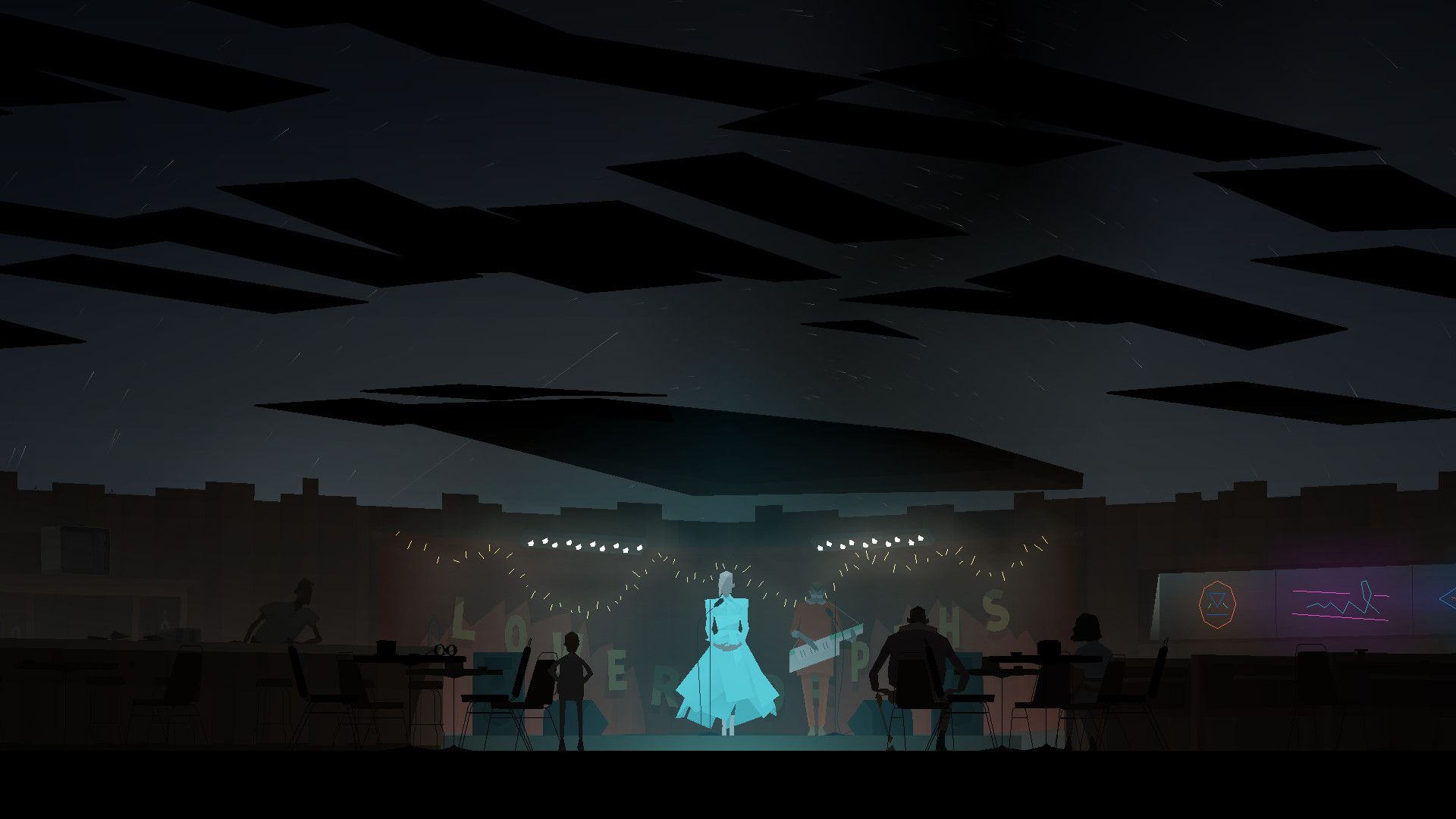I’ve asked a lot of developers what it feels like to finish a game, and it’s often a mixture of emotions, many of them somber and contemplative, as the past meets the present, and the future is suddenly uncertain. But Kentucky Route Zero designer Tamas Kemenczy, as we spoke on the phone only a few days before launch, put their feelings simply: “happiness.”
Video games take a long time to make. But even by today’s standards, it’s been quite a journey for Cardboard Computer’s Kentucky Route Zero, a five-part adventure about helping Conway, a man trying to deliver a package, navigate a mysterious underground highway beneath Kentucky called The Zero. Kentucky Route Zero’s first act arrived in 2013, and the gaps between episodes began to span longer than a few months. Soon, it was a few years.
This week, Kentucky Route Zero came to an end. The game’s fifth and concluding act arrived this week, alongside a collection called Kentucky Route Zero: TV Edition that allows non-PC players to see what folks, myself included, have been raving about. Kentucky Route Zero is remarkable, arguably a masterpiece. At its heart, a powerful but restrained story about the unexpected paths life provides and the poisonous nature of unchecked capitalism.
One conversation that happened over and over, as the lengthy wait for Kentucky Route Zero went on, was how to play it. Do you wait for all the acts to be completed and released? Do you play the game as it goes along? Some people, like myself, ended up somewhere in the middle, playing the first few episodes, before deciding it was better to enact some patience. Amidst that conversation was concern, perhaps, Kentucky Route Zero wouldn’t get finished.

“We were always comfortable with whatever call people wanted to make about that when they played it or if they wanted to wait pick it up later,” said designer Jake Elliott. “It’s fine. The stuff about like the game potentially being abandoned was always hard to hear because it was never on the table for us to walk away from this game before it was done.”
The story of Kentucky Route Zero starts earlier than 2013, but the early parts of 2011, when Kentucky Route Zero asked for a meager $6,500 on Kickstarter. This was a year before crowdfunding video games was put on the map by the millions raised for games like Broken Age and Wasteland 2. The developers ended up raising $8,583 over the course of a month. What started as one game became a story split over five acts, with the plan being to deliver additional acts every few months. The whole thing was supposed to be out in 2013. The first two acts did, in fact, arrive in 2013, but act three slipped to 2014 and act four arrived in 2016.
Now, the story is complete, and I wanted to know how the team got here.
Kentucky Route Zero is full of Lynch-ian strangeness (or magical realism), a place where people and places all feel slightly off, but it’s very much rooted in our flawed world. Here, a sprawling power monopoly holds the local economy in a vise grip. A mining company asked its workers to dig so deep that it breached an underground lake, killing everyone in the mine.
“Kentucky” being in the name is, it turns out, not a coincidence.
“[Kentucky] has a great history of both some pretty awful exploitation and resource extraction and stuff like that,” said Elliott, “but also a great history of labor organization and other kinds of radical elements making it survivable and pushing back against these other forces.”
The state has been home to a number of historical labor disputes over the years. The Harlan County War of the 1930s, for example, was a violent standoff over the right of coal miners to unionize during the height of the Great Depression. Profits were shrinking, and so coal mine owners sought to minimize losses by sharply cutting the workers’ already meager wages.
Similar struggles continue to play out, even today.
When development started, everyone was located in Chicago, Illinois. Over the years, people started to spread out. Elliott’s wife is from Kentucky, and he later moved there, too.
“A lot of what we wanted to capture from our travels through here and from our time here,” said Elliott, “has been the atmosphere [of] these highways late at night, running through forests and mountains.”
There are other Kentucky connections, too. In 2009, Kemenczy and Elliott collaborated with others on Sidequest!: A Classic Cyberpsychadelic Text Adventure, a remix/homage to 1976’s Colossal Cave Adventure. Colossal Cave Adventure, credited as the first piece of interactive fiction and foundational for the adventure genre, was inspired by the enormous Mammoth Cave system in Kentucky, a labyrinth so large it’s the world’s longest cave system.
"I think even if we'd been intentionally trying to avoid reflecting the landscape or the political climate of the last four years especially, it still would have influenced the work and manifested in some way."
Both a lot and surprisingly little has changed over the course of Kentucky Route Zero’s protracted development. An outline the team created to map out the broad arc of the five acts remained consistent from start to finish, even if many of the finer details were unclear.
“A lot of details were deliberately left blank so that we could respond to the process and material and wherever we were at when we're working on it,” said Elliott. “[We] didn’t want to overdetermine what we might want to be.”
The structure of the game was very different at one point, with players navigating a Metroid-inspired cave with multiple characters who sported different abilities. Junebug, a charming singer and one of Kentucky Route Zero’s most memorable characters, was at one point basically an “abandoned Chuck E. Cheese robot” who could also talk to computers.
“We wanted to avoid, from the start, giving ourselves too much like homework and saying ‘Here's what we're going to do—a, b and c—for the next 10 years’ or something,” said Elliott. “I wanted to leave gaps and keep it open. Because for us, there's the planning phase and the design phase. Once we get working with the material, things always change really dramatically, just from us responding to each other's work or responding to our own work.”

The game’s ending, for example, was thematically consistent with their outline, but the specifics of how it all played out, including the presence of a main character, changed.
Another element that seemed to change over time was the sharpness of the game’s politics. Both Kentucky Route Zero and Disco Elysium are games that tangle directly with the intersection of politics and power. They come at the idea from different angles, with Disco Elysium much more concerned with the specifics of ideology and ideological theory and Kentucky Route Zero focused on the way politics manifests in the daily lives of people. But both games were developed pre-2016 and post-2016, an era when a great many people saw their preconceived notions about politics shredded, and where new activism has flourished.
Kentucky Route Zero centers labor struggles in its story from the very beginning, but especially starting in the fourth act—an episode that was released in the middle of the Republican National Convention during the summer of 2016—the game is much more explicit about its position on why those things happened and the people responsible.
“I think that's accurate,” said Elliott. “[...] I definitely feel like we've gotten clearer about how about what the ideas are and how to work with them over the course of [development].”
“We're all living living in this country, like every other person living in this country during this period of time,” said composer Ben Babbitt. “And I think even if we'd been intentionally trying to avoid reflecting the landscape or the political climate of the last four years especially, it still would have influenced the work and manifested in some way.”
One reason the developers could change things around so much was because they rarely showed their work publicly—and because they took the game’s sense of mystery so seriously, they worried about spoilers. These days, it’s common for fans to have an inside look at the creative process, but Kentucky Route Zero took the opposite approach, as Cardboard Computer would go dark for long stretches of time. This changed a bit when the studio launched a Patreon, but unless you were paying a few dollars for the privilege, you basically took it on faith that the developers would eventually show up with something new.
“I'm looking forward to having a little different relationship with their audience going forward,” said Kemenczy, who shared a desire to share how their game, one praised for how meticulous and carefully placed every piece on the screen feels, would often break apart. “It would be nice to share work in progress, and not worry about spoilers and stuff like that.”
Fortunately, it appears Kentucky Route Zero is just the start of collaborations between everyone on Cardboard Computer, who’ve signaled they plan to work together in the future. What is remains to be seen, but if Kentucky Route Zero suggests we should all be very excited.
Follow Patrick on Twitter. His email is patrick.klepek@vice.com, and available privately on Signal (224-707-1561).
from VICE https://ift.tt/2RCK494
via cheap web hosting
No comments:
Post a Comment